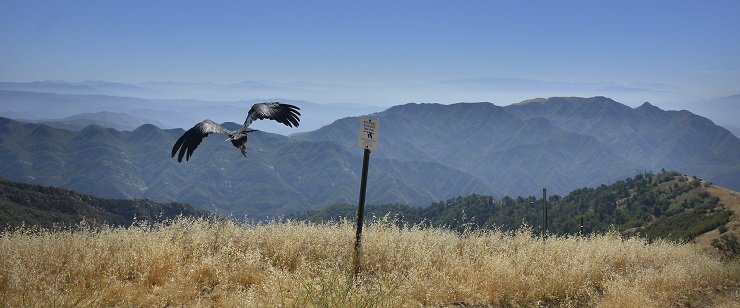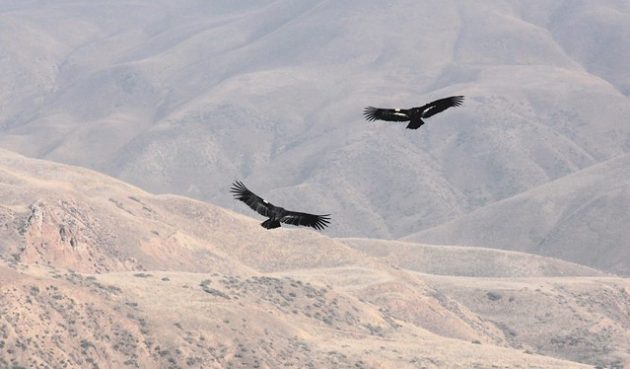
The U.S. Fish and Wildlife Service (FWS) recently proposed reintroducing California Condors in the Pacific Northwest. Although sometimes thought of a bird of the Southwest, the condor’s historical range reaches as far north as British Columbia. In 1806, Lewis and Clark saw condors near the Columbia River, which makes up much of the Washington-Oregon border. But condors have not been in the Pacific Northwest for more than a century.
Of course, the California Condor is listed as “endangered” under the Endangered Species Act (ESA) and it has been famously subject to some of the most ambitious conservation efforts (including litigation) ever undertaken for a bird.
After years of study, FWS has proposed releasing captive-bred condors in Redwoods National Park in Northern California, not far from the Oregon border. The proposal is in the form of a “proposed rule” that was published in the Federal Register for public comment. FWS will consider the comments and will likely issue a final rule similar or identical to the proposed rule later this year.
But this potential population of California Condors will be a “nonessential experimental” group. What does that mean?
The short answer is that “experimental” and “nonessential” are special categories under ESA. The longer answer requires some background.
One management tool used by FWS is reintroduction of an endangered species into its former range. Since FWS does not manage all of the potential habitat for a species, it must invariably cooperate with others for a successful reintroduction. But because reintroduction of an endangered species can bring costly regulations and land-use limitations, there can be resistance from landowners and others.
To address these concerns, Congress provided some administrative flexibility in 1982 by creating Section 10(j) of ESA, which allows FWS to designate “experimental” populations. An “experimental” population can reduce the regulatory impact of a reintroduction.
An experimental population is a special designation for a group that will be reintroduced in an area that is geographically isolated from other populations of the species.
When a population is designated “experimental,” that population is treated as “threatened,” regardless of the species’ designation elsewhere in its range. In other words, an experimental population of an “endangered” species is treated as “threatened,” which has fewer protections. Treating the experimental population as “threatened” allows FWS discretion to customize management and regulations for that population.
An “experimental” population may be designated either “essential” or “nonessential.” An “essential” population is, not surprisingly, required for the continued existence of a species. A “nonessential” population population is obviously not essential, and that designation allows for relaxed management and regulations, easing the regulatory burden associated with endangered species. Virtually all experimental populations are classified as “nonessential,” providing flexibility.
For example, for “nonessential” populations, FWS is not allowed to designate “critical habitat.” And some “incidental take” (i.e., unintentional harm to a listed species) is allowed. Regulations for each “experimental nonessential” population must be published in the Federal Register.
In the case of California Condors in the Pacific Northwest, FWS determined that the proposed new population would be “nonessential” because there are already: (1) three disjunct (e.g., geographically separate) and intensively-managed populations; (2) with ongoing releases of captive-bred condors; and (3) a sizable population of captive condors. While the proposed new population would potentially increase condor numbers, it would not be “essential.”
The takeaway is that a “nonessential experimental” classification allows more flexible management and regulatory regime for that geographically-distinct population. But that does not necessarily mean there are no protections.
In fact, the proposed northwest population would not even be the first “nonessential experimental” population of California Condor. The population in Arizona, Utah, and Nevada was designated as such in 1996, before the first release from Vermilion Cliffs National Monument in Arizona.

Visitors to the Pacific Northwest who appreciate craft beer might sample Condor Kolsch from Rogue Ale & Spirits of Newport, Oregon. It is a collaboration of Rogue and the Oregon Zoo, one of a handful of condor breeding facilities in the United States (review here).
California Condor photos (1, 2) by Pacific Southwest Region USFWS.











This is fascinating, Jason. Thanks for the crisp explanation!
Yes, agree with Mike. Government-speak does not always mean what we think it means.
Dear Jason,
Thank you for your explanation! It’s quite clear and helpful to figure out the context of the so-called published “Establishment of a Nonessential Experimental Population of the California Condor in the Pacific Northwest”.